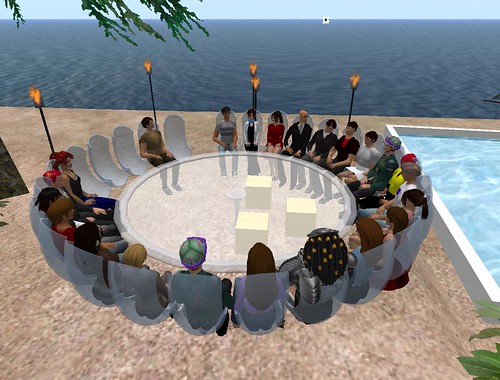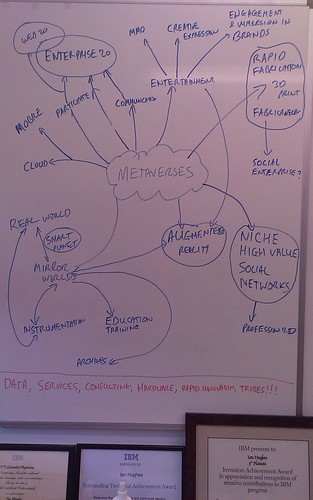Andy Piper brought his new toy to the lab today. While on a whistle stop tour of China recently he called in at Hong Kong on the way back, where he picked up one of the a Parrot AR.Drones which have been released this month.
The AR.Drone is a quadricopter with 2 video cameras, one mounted in the nose and one downward-facing. The drone that acts as an ad-hock Wi-Fi access point allowing it to be controlled from any device with Wi-Fi. At the moment Parrot are only shipping a client for the iPhone, but there is an API available and there is already footage on the net using an Android Nexus One to control one. It’s loaded with a bunch of other sensors as well, an accelerometer to help keep it stable and a ultrasound altimeter to help it maintain altitude over changing ground.
The iPhone interface for flying the drone uses the accelerometer and is a bit tricky to start with, but I think with a little bit of practice it shouldn’t take too long to get the hang of it. The feed from the video cameras is fed back to the handset allowing you to get a pilot’s eye view. At the moment none of the software allows you to capture this video, but it’s expected to be added soon. You can also use the camera to play AR games or have the it hover and hold station over markers on the floor.
The whole thing runs a embedded Linux build on a ARM chip and you can even telnet into the thing. It comes with 2 chassis, one for outside and one with some protective shrouds for the propellers to use indoors.
I think some very cool stuff should be possible with a platform like this.
Here are 2 short videos I short of a few of us having a go with it on the lawn in front of Hursley House.

 On Wednesday,
On Wednesday, 
